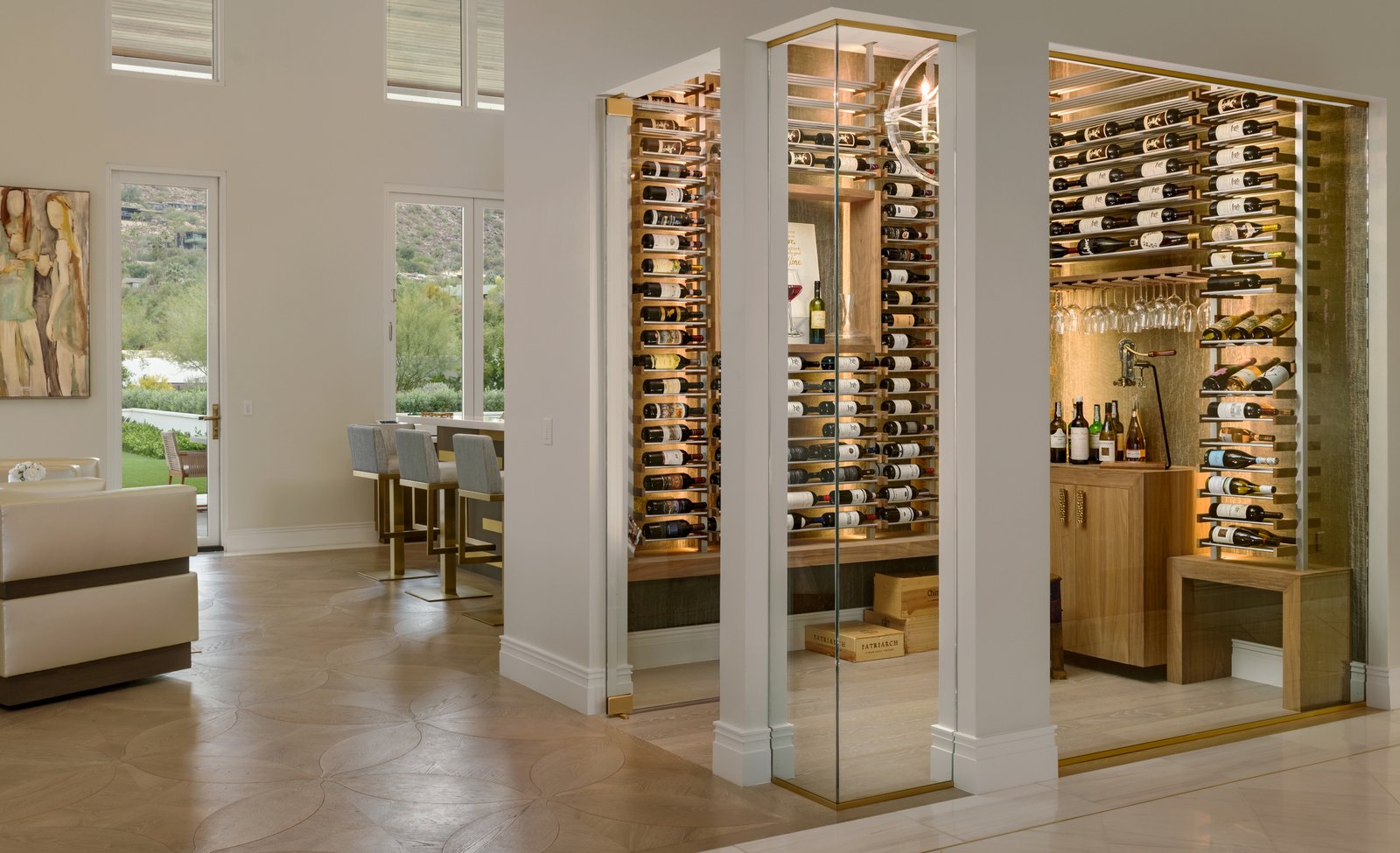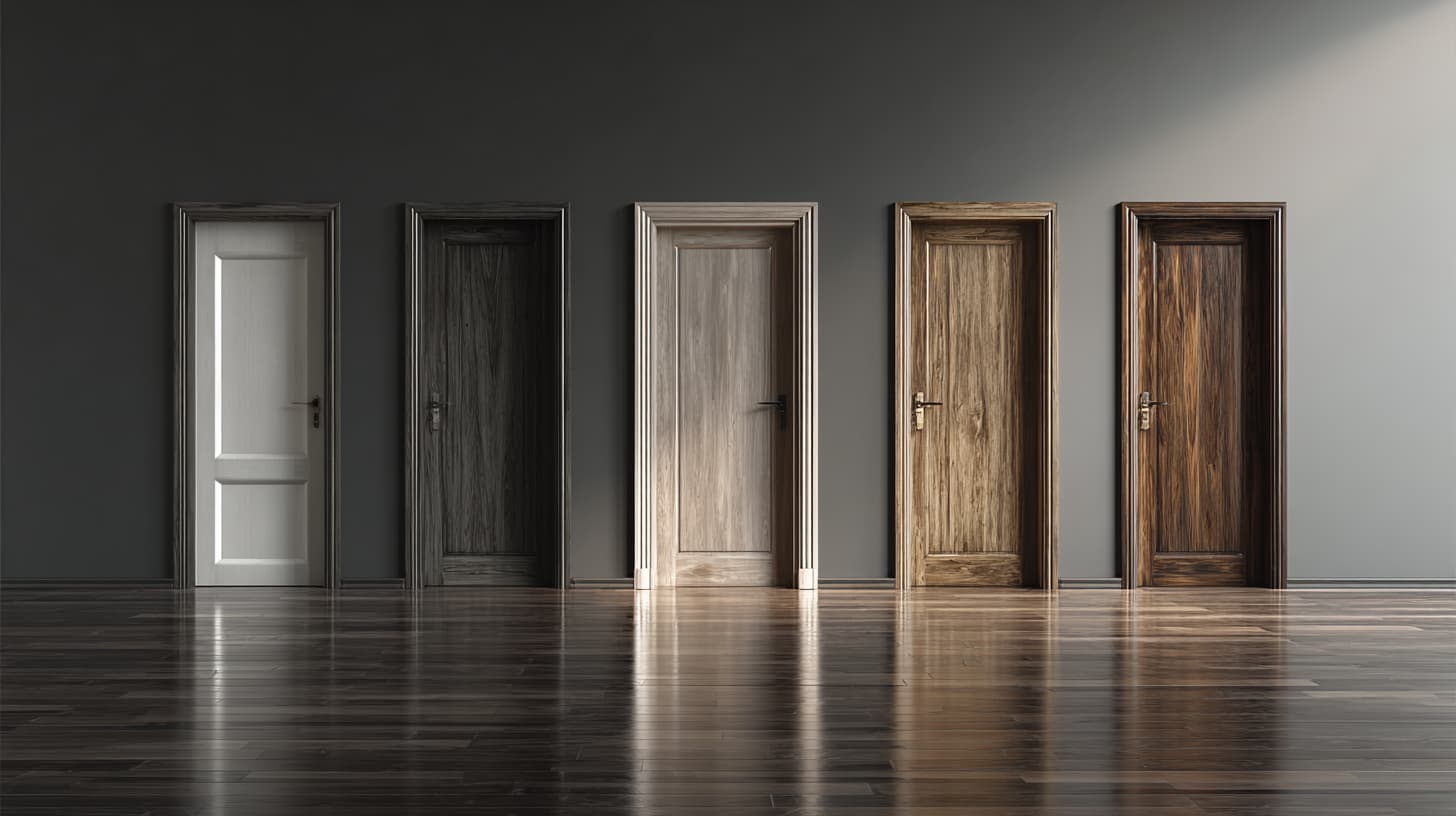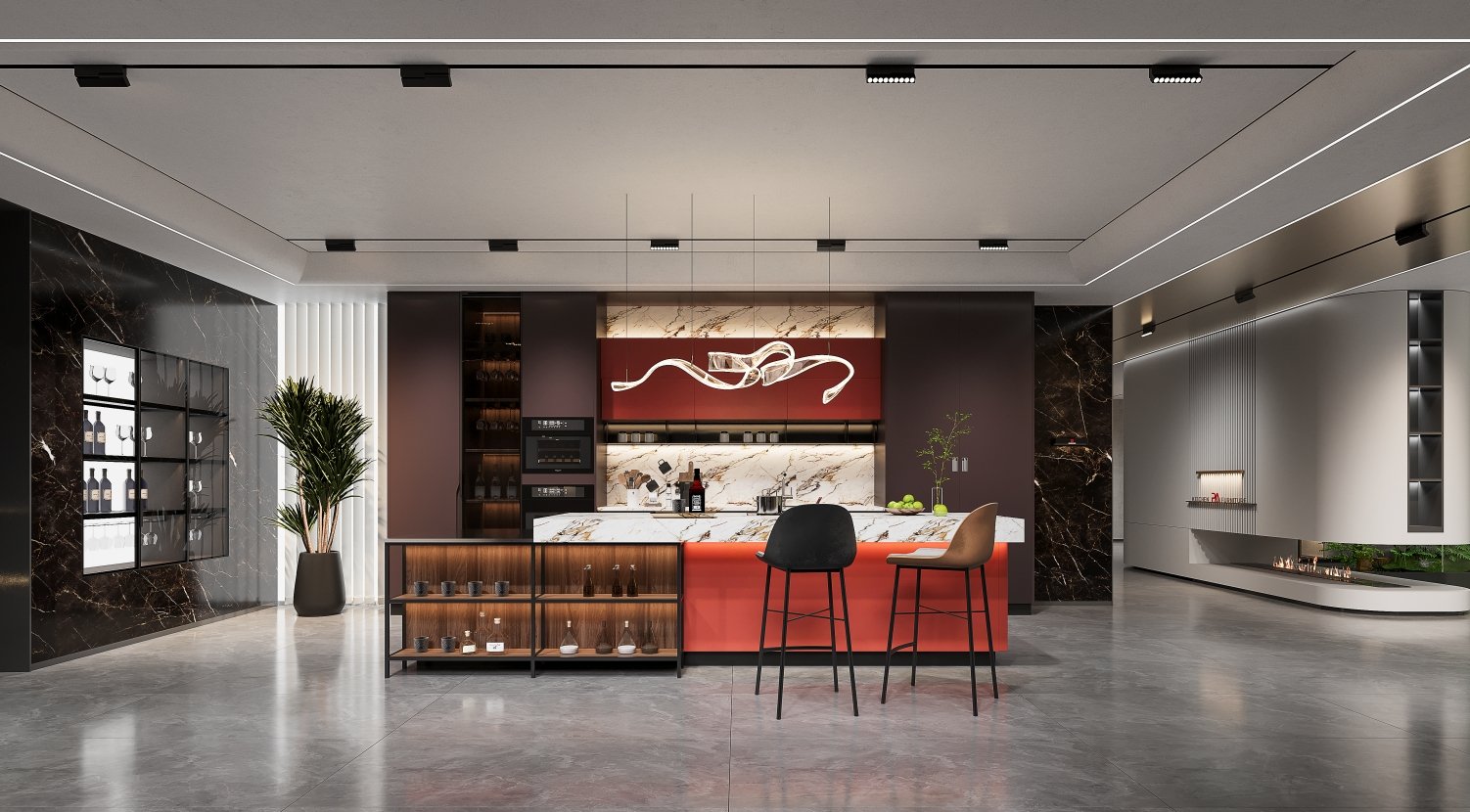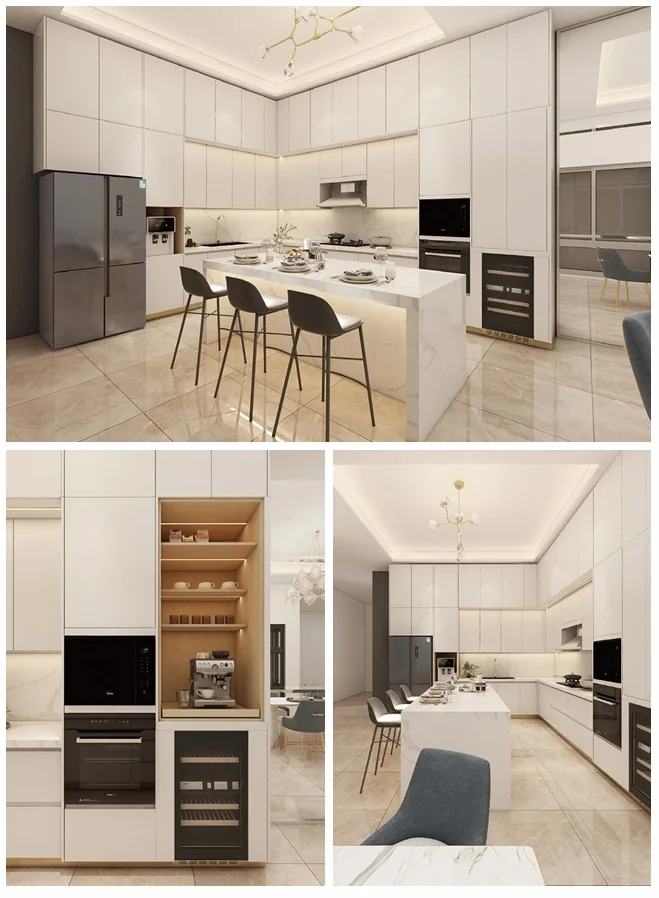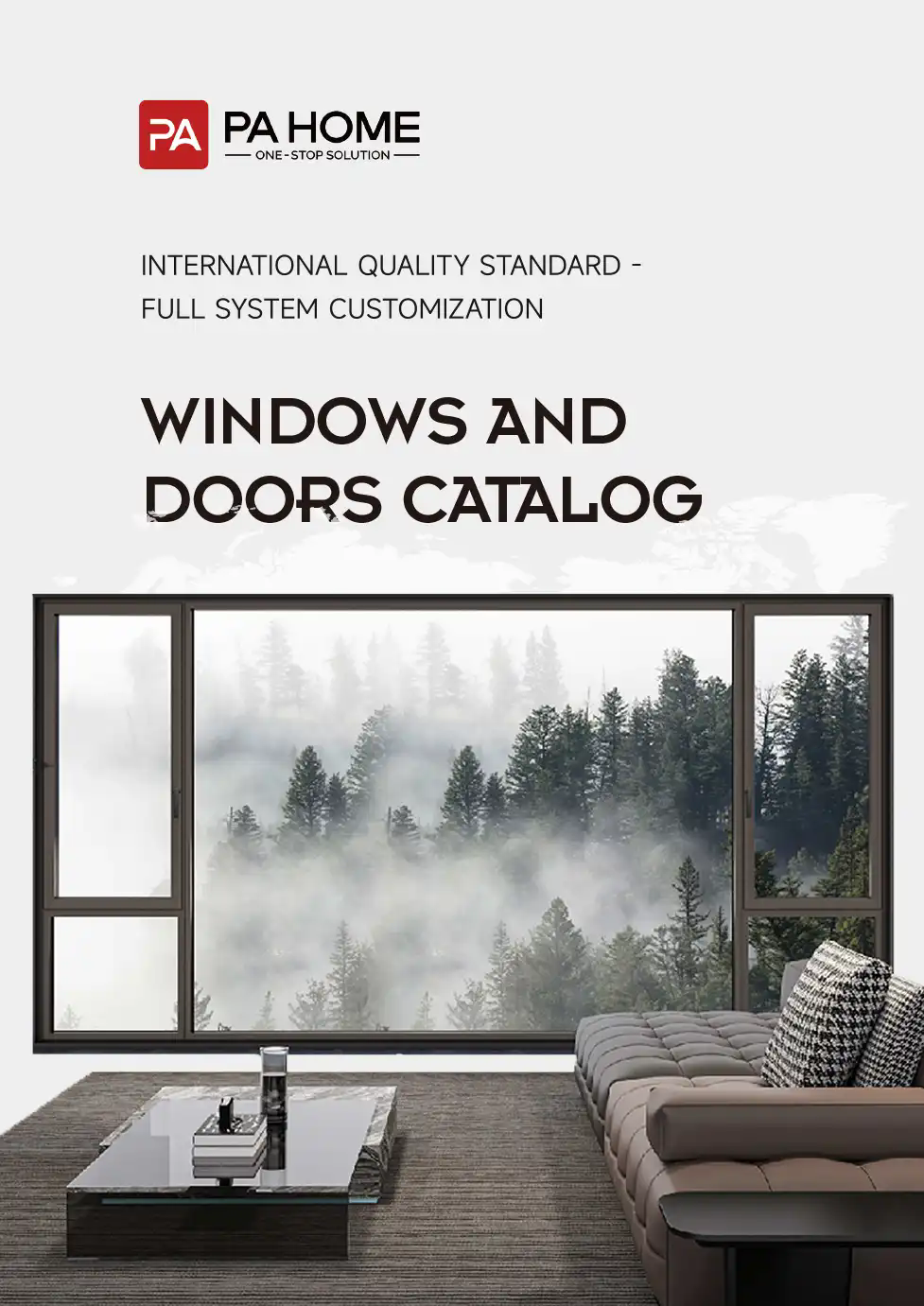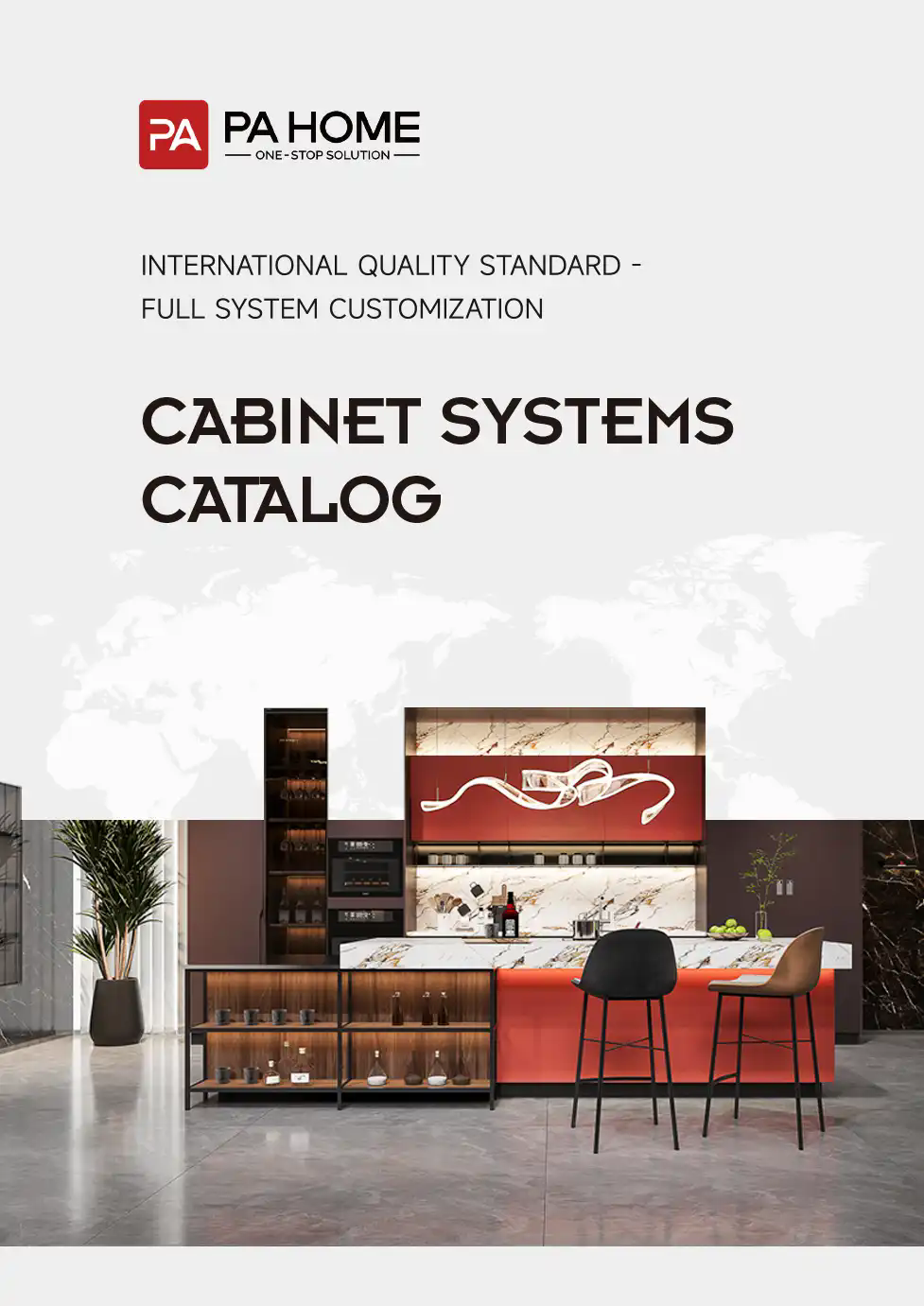Choosing kitchen cabinet door styles sounds simple, right? But walk into a showroom or browse online, and you’ll quickly realize there are a lot of choices. Slab, Shaker, Raised Panel… which one actually works for your space, lifestyle, and budget?
This guide will break it down in plain English. We’ll look at the most popular kitchen cabinet door styles, how to choose the right materials and finishes, what impacts the price, and what’s trending in 2025 and beyond. Whether you’re remodeling or starting from scratch, this guide will help you make smart, stylish choices.
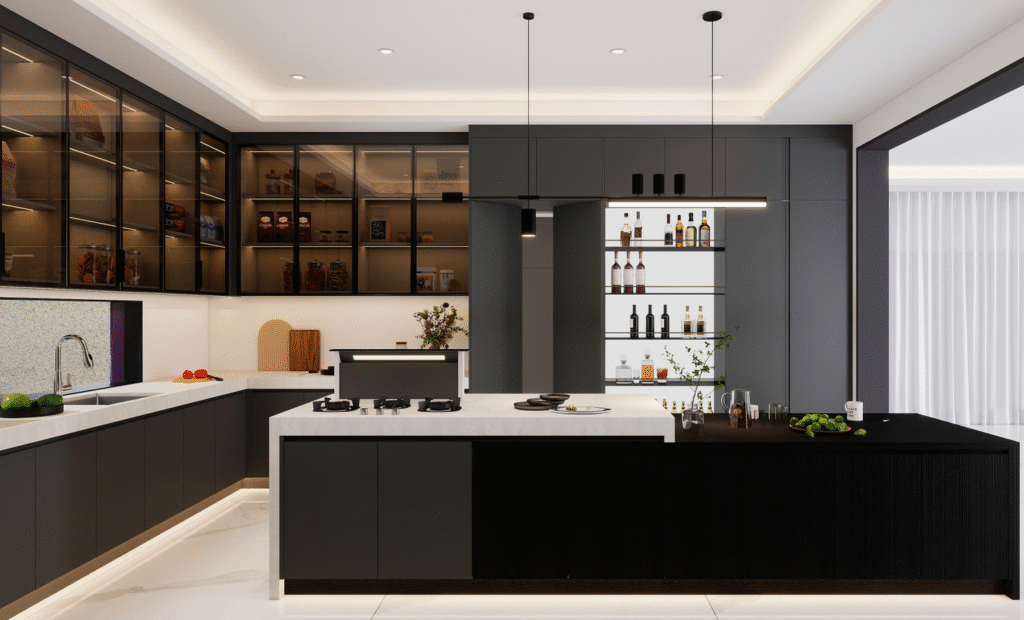
Why Does the Right Kitchen Cabinet Door Style Matter?
Think of cabinet doors as your kitchen’s face. They shape the look, but they also impact cleaning, durability, and your daily experience. Pick the wrong one, and you might end up with doors that are hard to clean, clash with your design, or blow your budget.
People often choose trendy styles without checking if they’re practical. That sleek matte black slab door? Gorgeous. But in a busy family kitchen? Fingerprint city. Shaker doors look timeless but those recessed panels? They trap grease and dust if you don’t clean often.
So before you pick based on looks alone, ask yourself: How much time will I spend cleaning? Do I cook a lot, or is my kitchen more for show? What style fits my home’s overall vibe? And what’s my long-term plan—flip the house, or live in it forever?
The door style influences both the kitchen’s visual harmony and its day-to-day usability—choosing wisely prevents cleaning headaches and design clashes.
Cabinet doors are purely decorative; they don’t affect maintenance or long-term wear.
What Are the Most Popular Kitchen Cabinet Door Styles?
Let’s unpack the top contenders.
Shaker Doors
Clean, classic, and crazy popular. They feature a five-piece frame with a recessed center panel, giving a subtle but elegant dimension. Shaker works for almost any kitchen style—from farmhouse to modern. Slim Shaker doors are trending now, offering the same timeless look with a more contemporary, narrower frame.
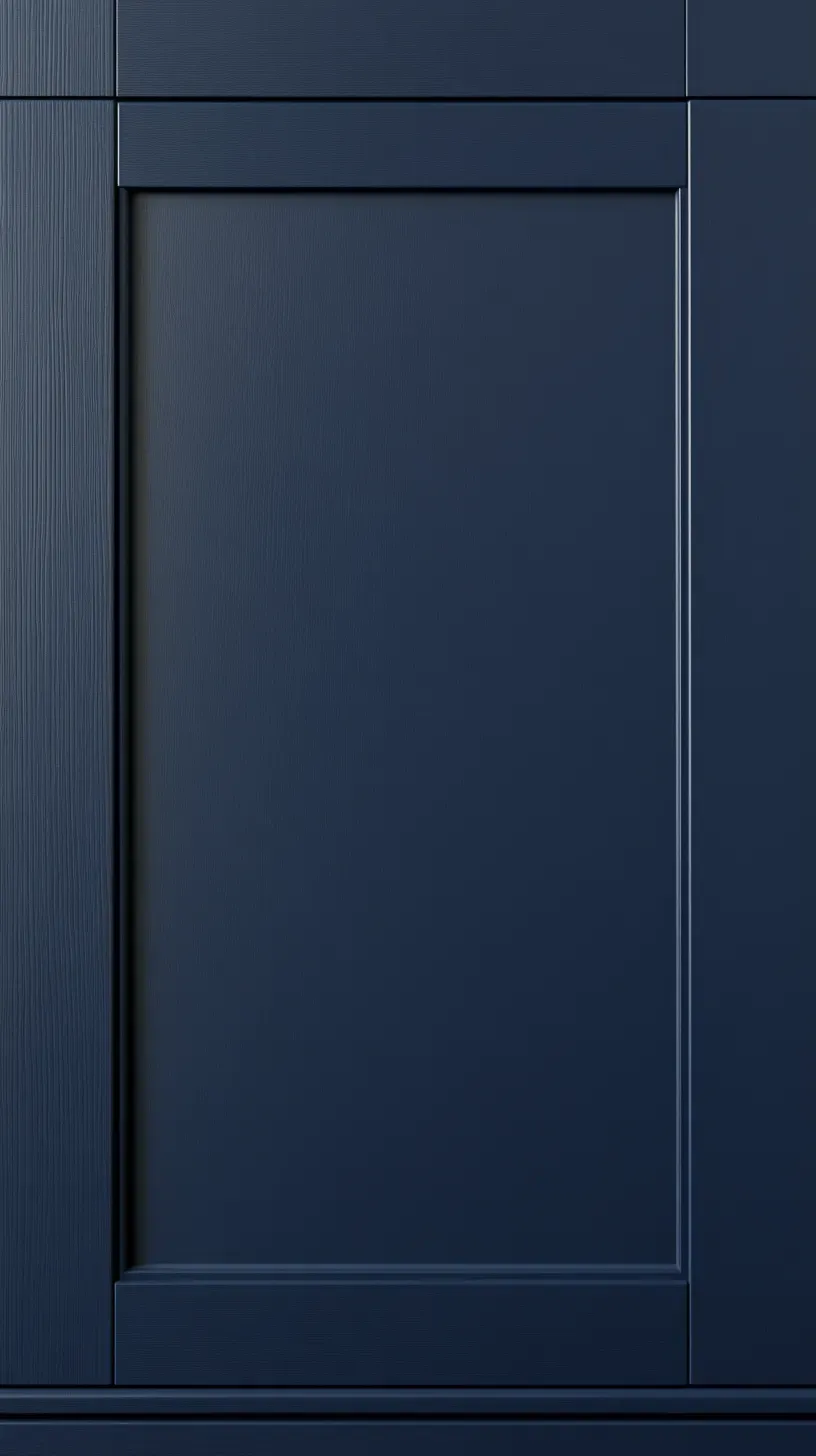
Slab (Flat Panel) Doors
Sleek and minimal, slab doors are just that—a solid panel with no detailing. This style is perfect for contemporary, modern, and minimalist kitchens. It’s also the easiest to clean since there are no grooves to trap dust.
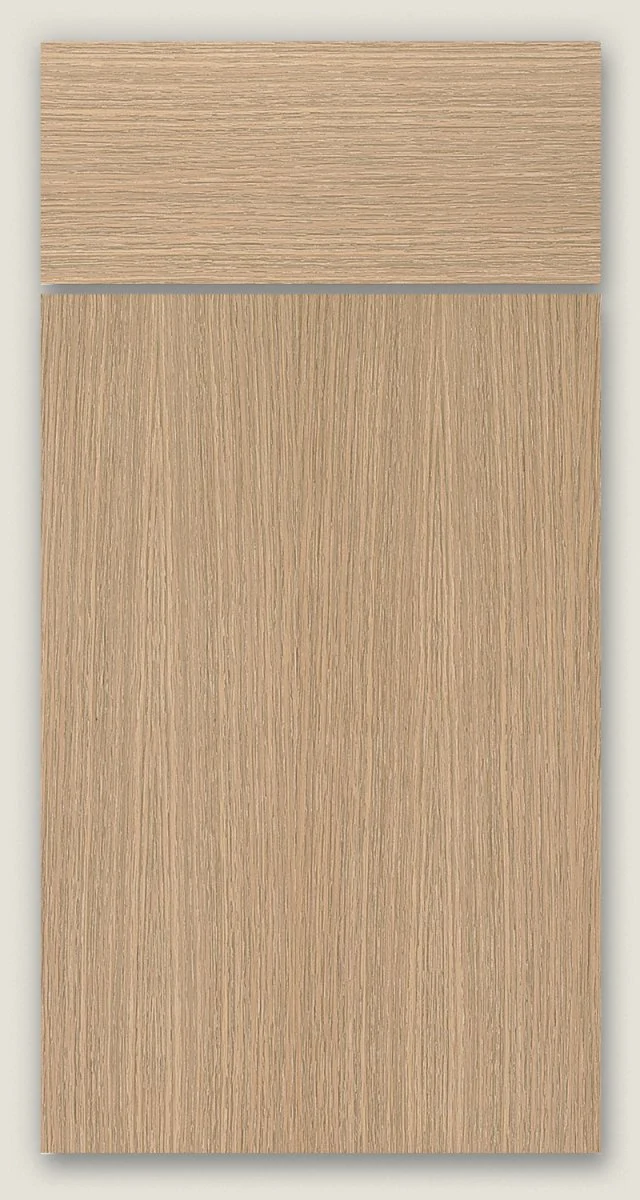
Raised Panel Doors
These doors have a center panel that’s elevated, adding depth and shadow. Ideal for traditional or classic kitchens, they pair beautifully with ornate hardware and natural wood finishes. Keep in mind: the intricate profiles make them harder to clean.
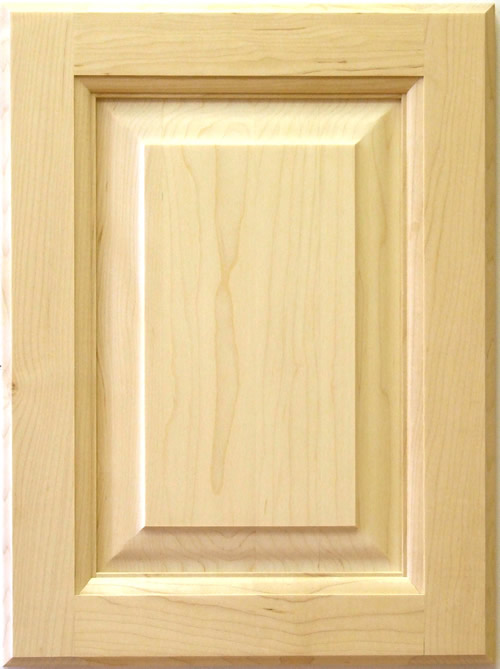
Inset Doors
Unlike overlay doors, inset doors sit flush within the cabinet frame. This style gives a built-in, furniture-like look and requires precise craftsmanship. It’s stunning—but also one of the most expensive options.
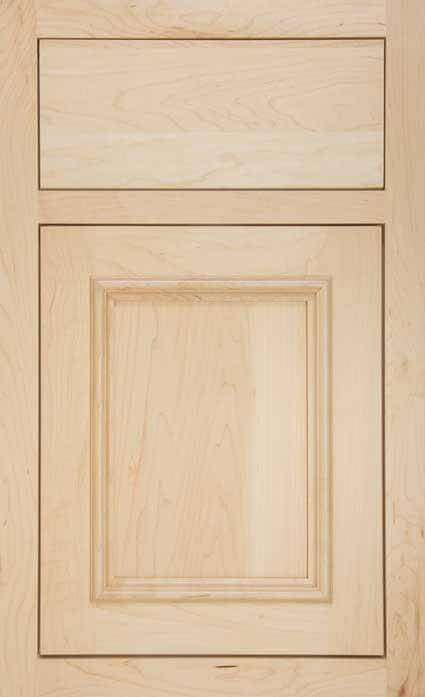
Beadboard Doors
These doors feature vertical grooves that create a charming, cottage feel. They work well in coastal, farmhouse, and country-style kitchens. However, the grooves can collect crumbs and grease, so regular cleaning is a must.
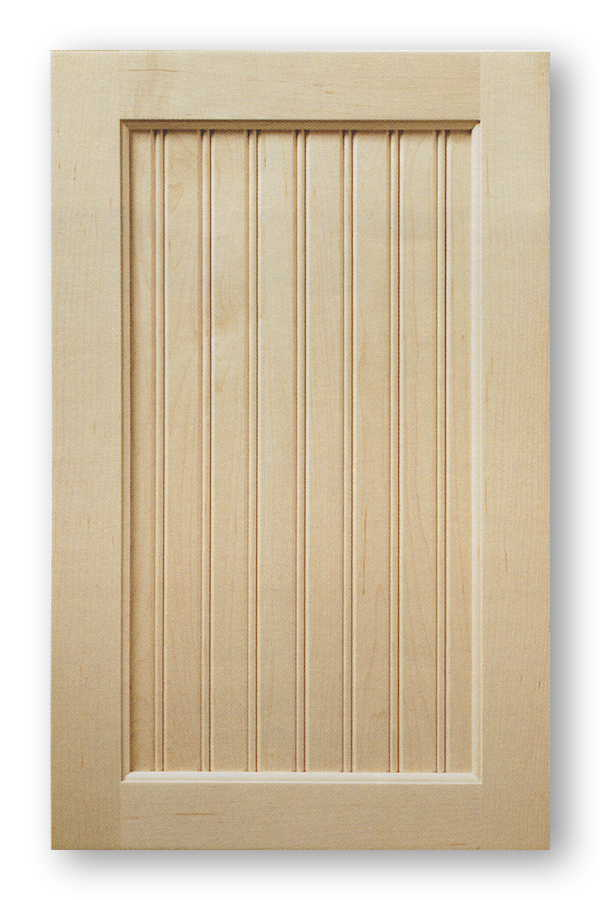
Glass-Front Doors
Perfect for upper cabinets or display sections. You can choose clear, frosted, or mullion-style (with decorative dividers). These doors add visual openness to your kitchen but require organized interiors—clutter will show.
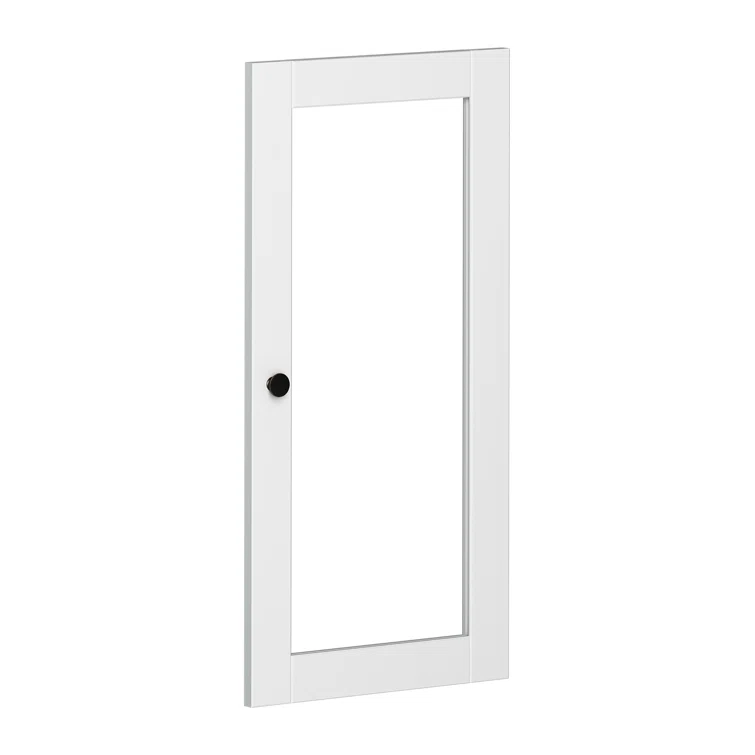
Louvered Doors
These have horizontal slats, allowing for airflow. They’re stylish and unique, often used for specialty cabinets or laundry areas. Be cautious though—they can feel busy if overused.
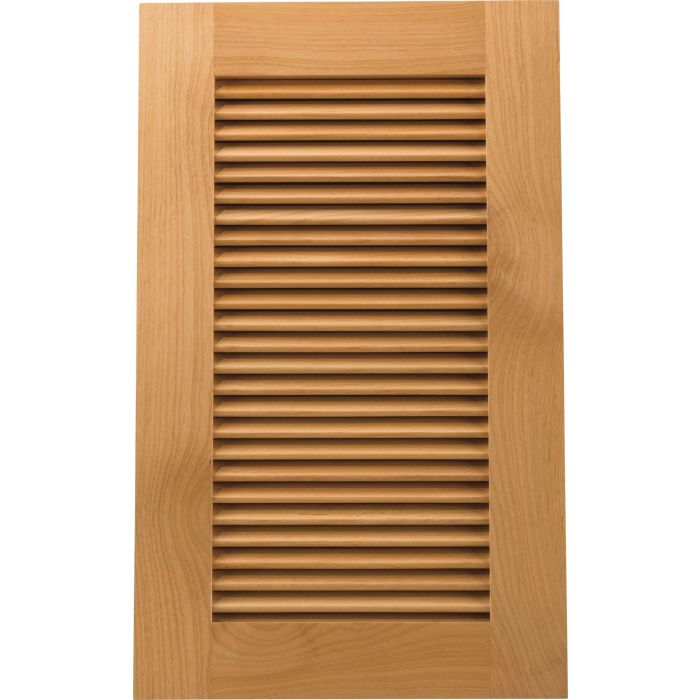
Distressed Doors
Want a rustic or vintage vibe? Distressed doors are intentionally weathered with sanded corners, antiqued finishes, or faux cracks. They look great in farmhouse kitchens but may not suit more modern designs.
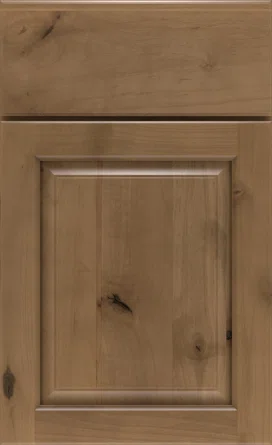
Each style comes with trade-offs in cost, upkeep, and vibe. Shaker and slab are the most versatile, but don’t be afraid to mix styles—like glass doors up top and slab or Shaker down below.0
How Do You Pick the Right Cabinet Door Material and Finish?
Cabinet doors aren’t just about looks. The material underneath matters for durability, cost, and finish.
-
Solid Wood: Natural, beautiful, and durable. Works well for stained finishes and intricate styles like raised panels. But it expands and contracts with humidity and is more expensive.
-
MDF (Medium-Density Fiberboard): Engineered from wood fibers and resin, MDF is smooth and stable. It’s a go-to for painted finishes and affordable Shaker styles. However, it’s not as water-resistant as solid wood.
-
Thermofoil: A vinyl layer vacuum-pressed over MDF. It’s cost-effective and easy to clean but prone to peeling if placed too close to heat sources like ovens.
-
Acrylic: High-gloss and ultra-modern. Acrylic cabinet doors have a mirror-like surface that resists stains and moisture. Perfect for bold, colorful kitchens—but they scratch more easily than other finishes.
-
Glass: Typically used in inserts. Clear, frosted, or patterned glass adds elegance and depth. For safety, always go for tempered glass.
| Material | Advantages | Disadvantages | Maintenance Requirements |
|---|---|---|---|
| Solid Wood | Natural beauty, durable, suitable for staining and intricate designs | Prone to humidity, more expensive | Regular painting, avoid moisture damage |
| MDF | Smooth, stable, ideal for painting, budget-friendly | Less water-resistant than solid wood, may warp with moisture | Keep dry, easy to clean |
| Thermofoil | Affordable, easy to clean, durable surface | Peels near heat sources, surface can scratch easily | Regular cleaning, avoid heat exposure |
| Glass | Enhances openness, ideal for showcasing, elegant and modern | Prone to fingerprints, needs organized interiors for display | Regular cleaning to keep glass clear |
| Aluminum | Highly durable, low maintenance, suits modern styles | Cool, industrial look, lacks warmth | Regular wiping, avoid scratching |
Finish also affects performance. Glossy finishes reflect light and are easy to wipe down. Matte finishes hide fingerprints but can be harder to clean. Wood veneers add warmth and texture but need sealing to avoid damage.
What About Overlay, Inset, and Hardware Choices?
How a door sits on the cabinet box changes everything—from the style to the functionality.
- Full Overlay: The door fully covers the cabinet box front. This creates a seamless, modern look and maximizes storage access. It’s very popular in new builds.
- Partial Overlay: Part of the cabinet frame remains visible. It’s a more traditional and often more budget-friendly option. Ideal for casual or transitional kitchens.
- Inset: The door sits inside the cabinet frame opening. It requires custom precision and offers a refined, built-in furniture appearance. However, it limits interior space slightly and costs more.
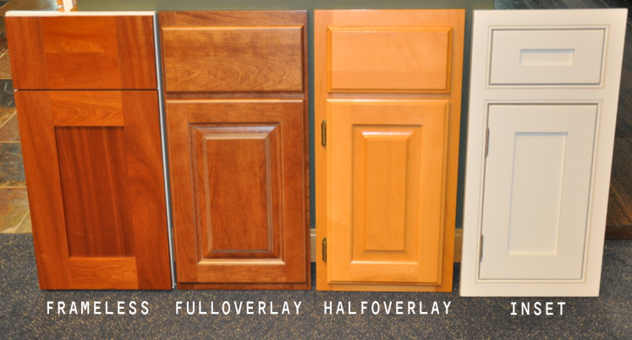
Your choice of hardware can enhance or ruin your cabinet doors. Soft-close hinges protect the doors and reduce noise. Push-to-open systems eliminate handles for ultra-modern looks. Just make sure they align with your kitchen’s design and your daily habits.
How Should Kitchen Door Styles Vary in Small vs. Large Spaces?
Space affects design. In smaller kitchens, slab doors or glass-front cabinets make a room feel bigger and more open. Lighter colors and reflective finishes can bounce light and reduce visual clutter.
In larger kitchens, you have room to experiment. Go bold with raised panel doors, intricate moldings, or two-tone cabinet setups. Mixed materials—like combining painted Shaker cabinets with natural wood islands—can add richness and dimension.
Consider proportions, too. Oversized doors can overpower a small room. Tiny cabinet doors in a large kitchen may feel underwhelming. Balance is everything.
Slab or glass-front doors open up tight spaces, while larger kitchens can handle ornate raised panels or two-tone schemes.
You must use the same door style throughout—mixing styles confuses the eye.
How Can You Balance Cost and Maintenance?
Cabinet doors are a long-term investment. Choose wisely.
Low-Budget Options: Slab-style doors in laminate, thermofoil, or melamine offer clean looks at the lowest cost. They’re also low-maintenance.
Mid-Range Choices: Painted MDF Shaker doors hit the sweet spot of style and affordability. They offer flexibility and a smooth finish.
High-End Styles: Inset doors or custom solid wood panels look amazing and last long—but be prepared to spend more on both materials and installation.
Maintenance matters too. Slab doors are easiest to clean—just wipe. Grooved styles like beadboard or raised panels trap dirt and take longer to clean.
To extend cabinet life, opt for:
Soft-close hinges to prevent slamming
Moisture-resistant finishes near sinks or ranges
Regular cleaning with non-abrasive products
These small habits save money and keep your kitchen looking fresh.
Investing in easy-clean slab or thermofoil for high-traffic areas and saving solid wood or inset doors for focal points balances budget and upkeep.
Cheaper materials always mean more maintenance; mid-range options aren’t worth the extra cost.
Top Kitchen Cabinet Door Trends for 2025 and Beyond
Design trends evolve fast—but certain directions are becoming clear:
Slim Shaker Frames: A more modern take on the classic. Narrower profiles fit minimalist aesthetics.
Matte Finishes: Increasingly popular for their soft texture and ability to hide smudges.
Bold Colors: Navy, forest green, deep plum, and even black are replacing white as go-to tones.
Mixed Materials: Expect combinations like walnut slab lowers with glass-front uppers, or painted cabinets paired with natural wood tones.
Hidden Hardware: Push-to-open and finger-pull grooves are replacing knobs for a streamlined, modern edge.
According to the National Kitchen + Bath Association’s 2024 Trends Report, over 60% of designers expect multi-style cabinet door mixes to become the norm in open-concept kitchens.
Whether you follow trends or go timeless, the best cabinet doors reflect you—your space, habits, and taste.
Slim Shaker frames, matte finishes, and mixed-material doors are gaining real market momentum, not just fleeting fads.
Bold colors and hidden hardware are gimmicks—white shaker with knobs is the only timeless choice.
Conclusion
Kitchen cabinet door styles aren’t just about beauty—they shape how your kitchen feels, functions, and ages. Pick with care, plan for your lifestyle, and don’t be afraid to go bold where it counts.
Need a shortcut? Start with Shaker if you’re unsure. It’s the little black dress of cabinet doors—reliable, versatile, and always in style. Contact us for more cabinet design advice.
FAQs
What is the best kitchen cabinet door style for a modern kitchen?
For a modern kitchen, slab (flat panel) doors are an excellent choice due to their sleek, minimalist design and easy maintenance. These doors are simple, clean, and perfect for contemporary spaces.
How do I clean Shaker kitchen cabinet doors?
To clean Shaker kitchen cabinet doors, use a soft cloth and mild soap solution. Avoid abrasive cleaners, as they can damage the wood. Regular dusting and wiping down the recessed panel can prevent buildup.
What are the advantages of distressed kitchen cabinet doors?
Distressed kitchen cabinet doors offer a rustic or vintage look, ideal for farmhouse or country-style kitchens. Their weathered finish adds character and charm, but they require regular cleaning to maintain their appeal.
Are glass-front cabinet doors easy to maintain?
Glass-front cabinet doors can add elegance and openness to your kitchen, but they require regular cleaning to avoid fingerprints and smudges. Tempered glass is recommended for safety and durability.
What is the difference between inset and overlay cabinet doors?
Inset cabinet doors sit flush within the cabinet frame for a built-in, seamless look, while overlay doors cover part of the cabinet frame. Inset doors require precise craftsmanship and are more expensive, while overlay doors are easier to install.
Related posts:
- Discover the Secrets of Best Selling Shaker Design Cabinets for a Timeless Kitchen Look
- The Ultimate Guide to Kitchen Cabinet Styles: Find Your Perfect Match
- Comprehensive Insights into Kitchen Cabinet Door Features and Trends
- Best 20 White Kitchen Cabinet Designs for 2025 Trends in Indonesia
- Ultimate Guide to Kitchen Cabinet Doors: Repair, Replacement, and Creation

